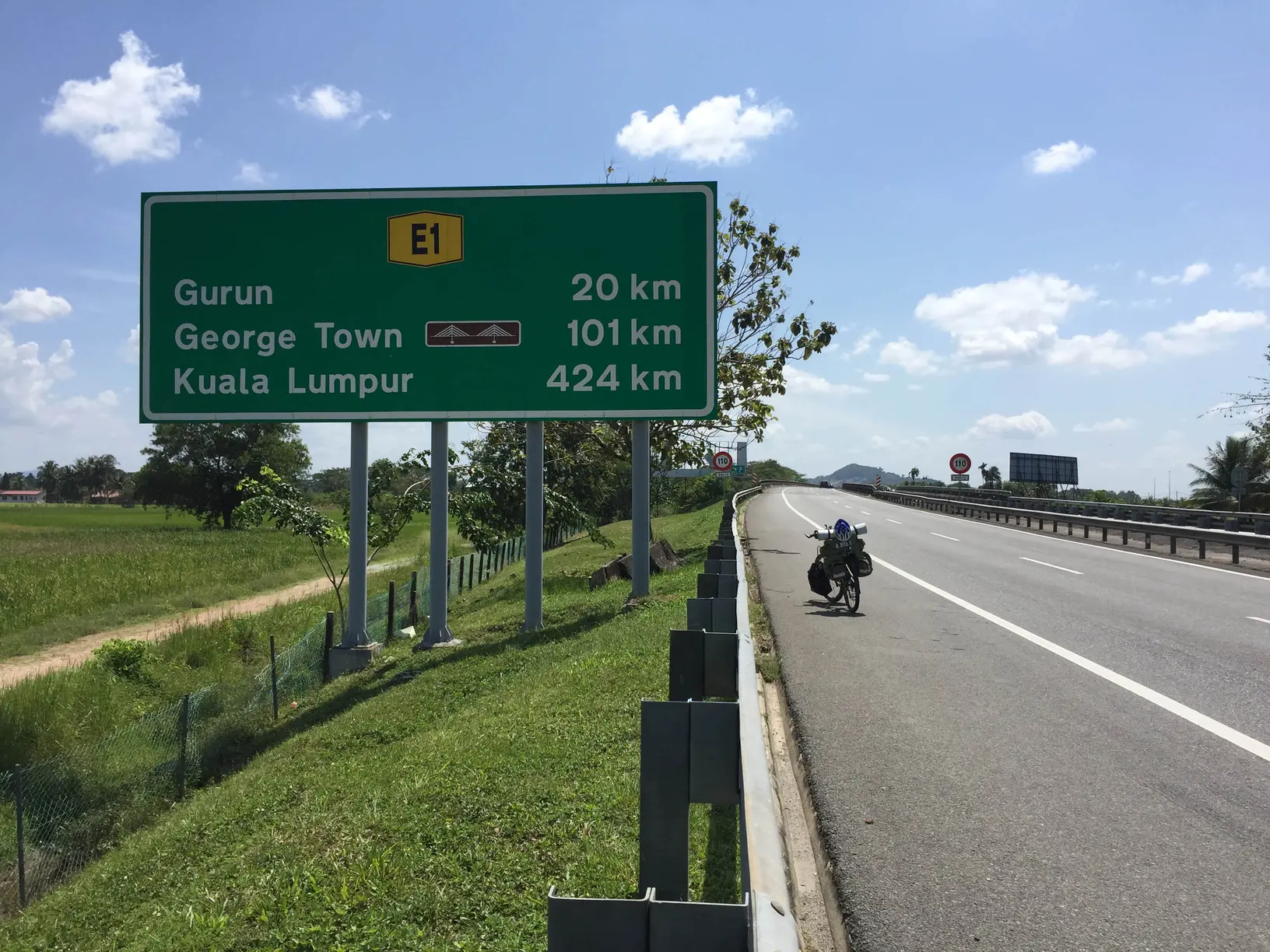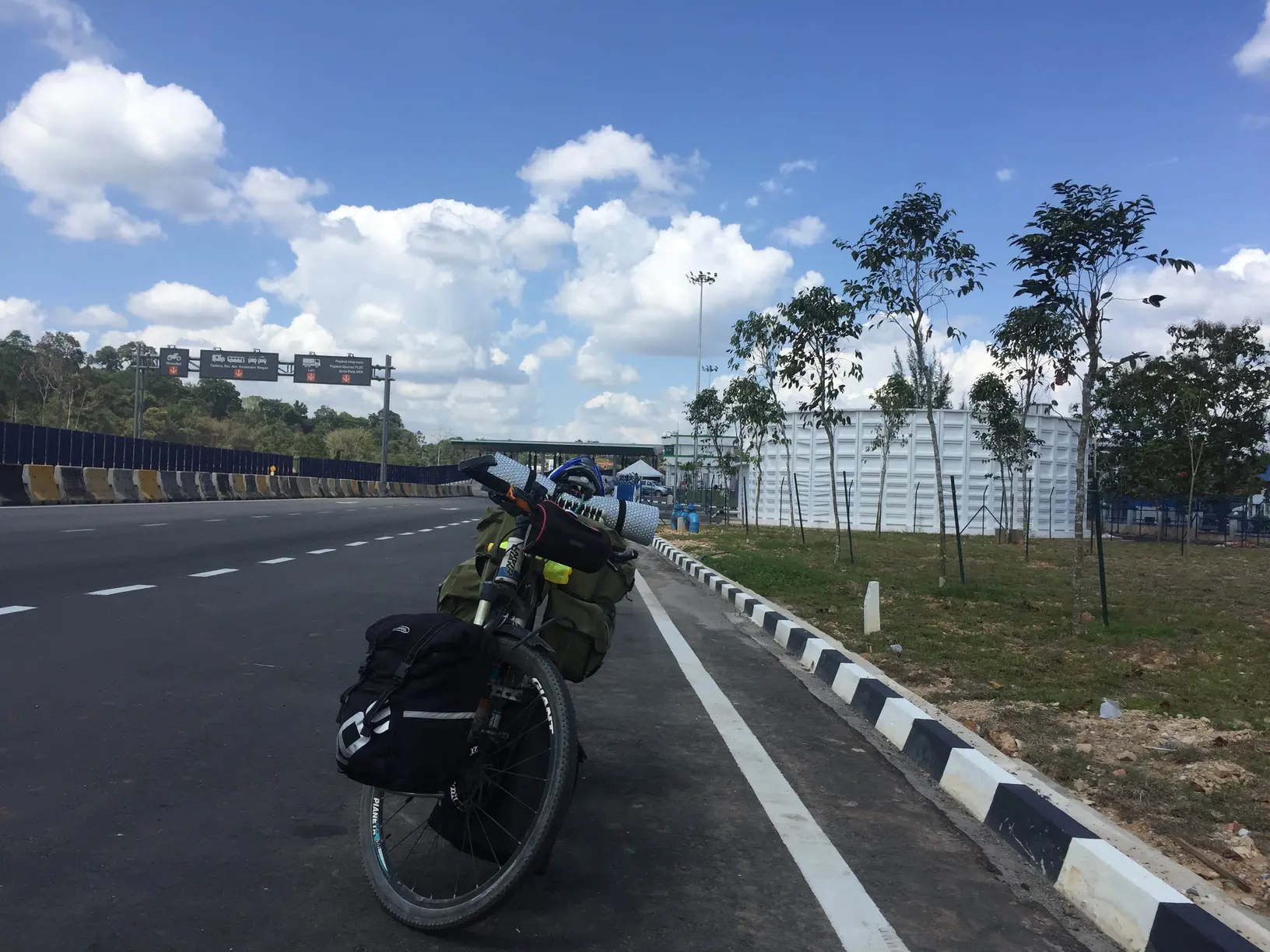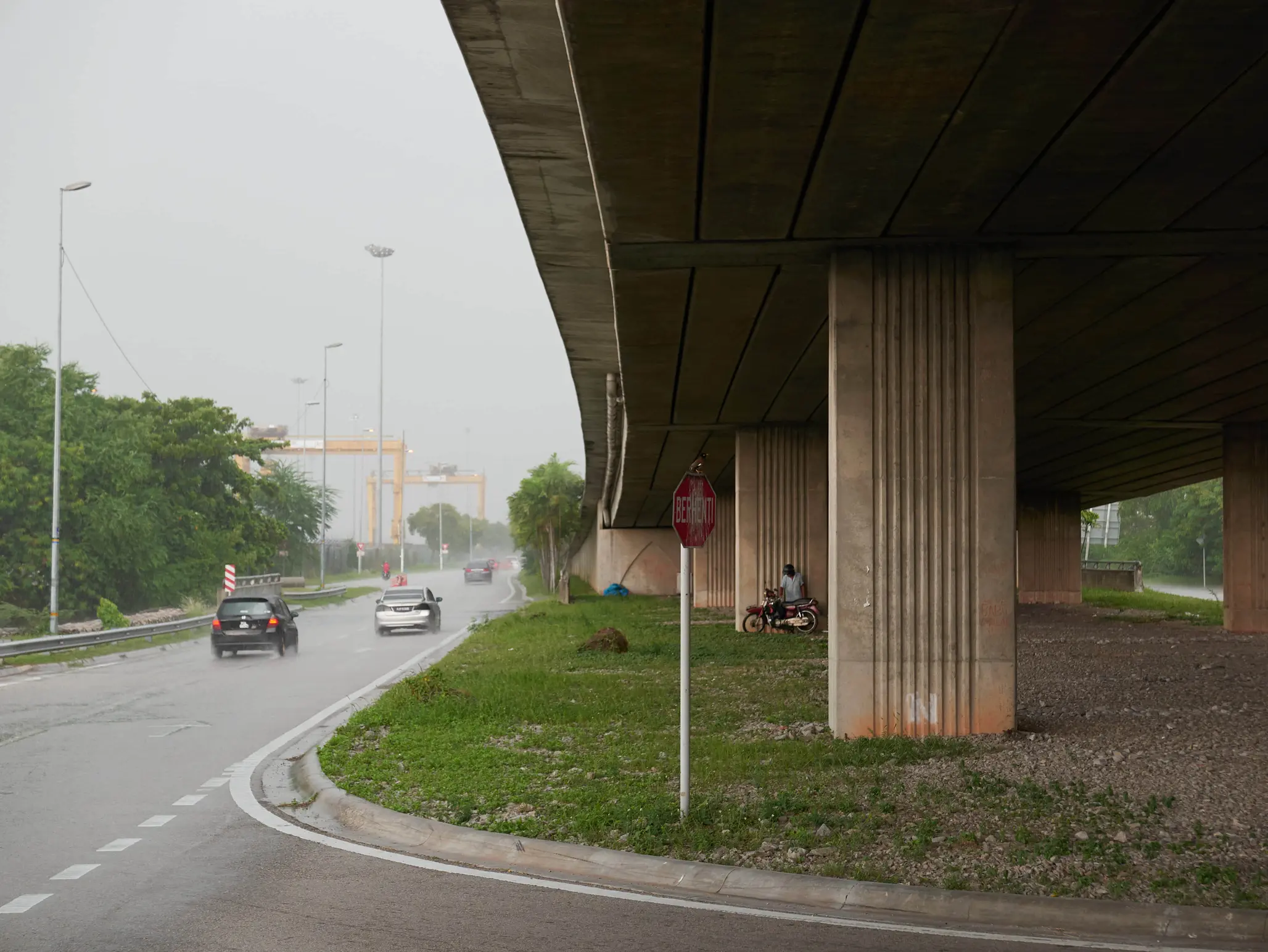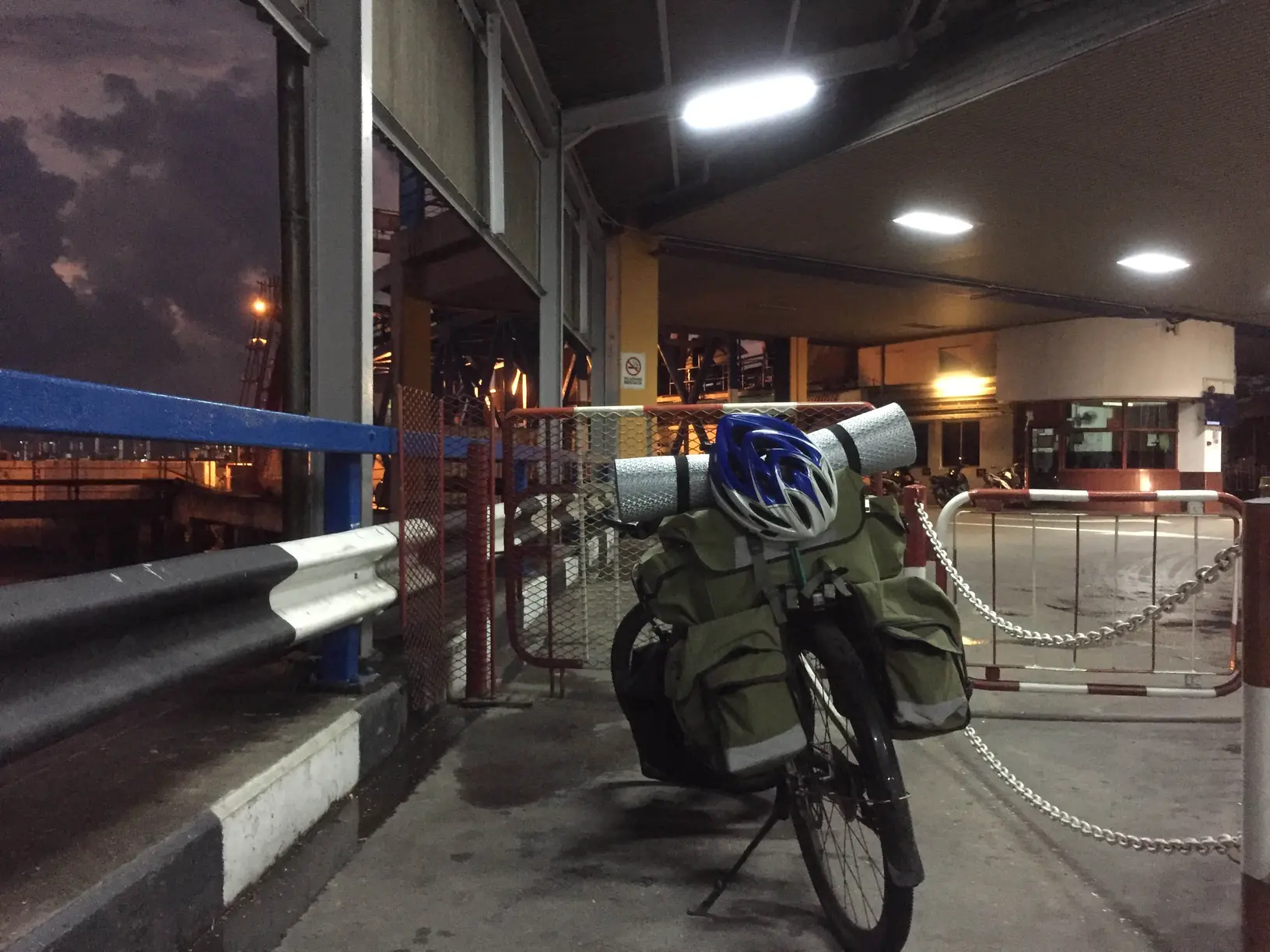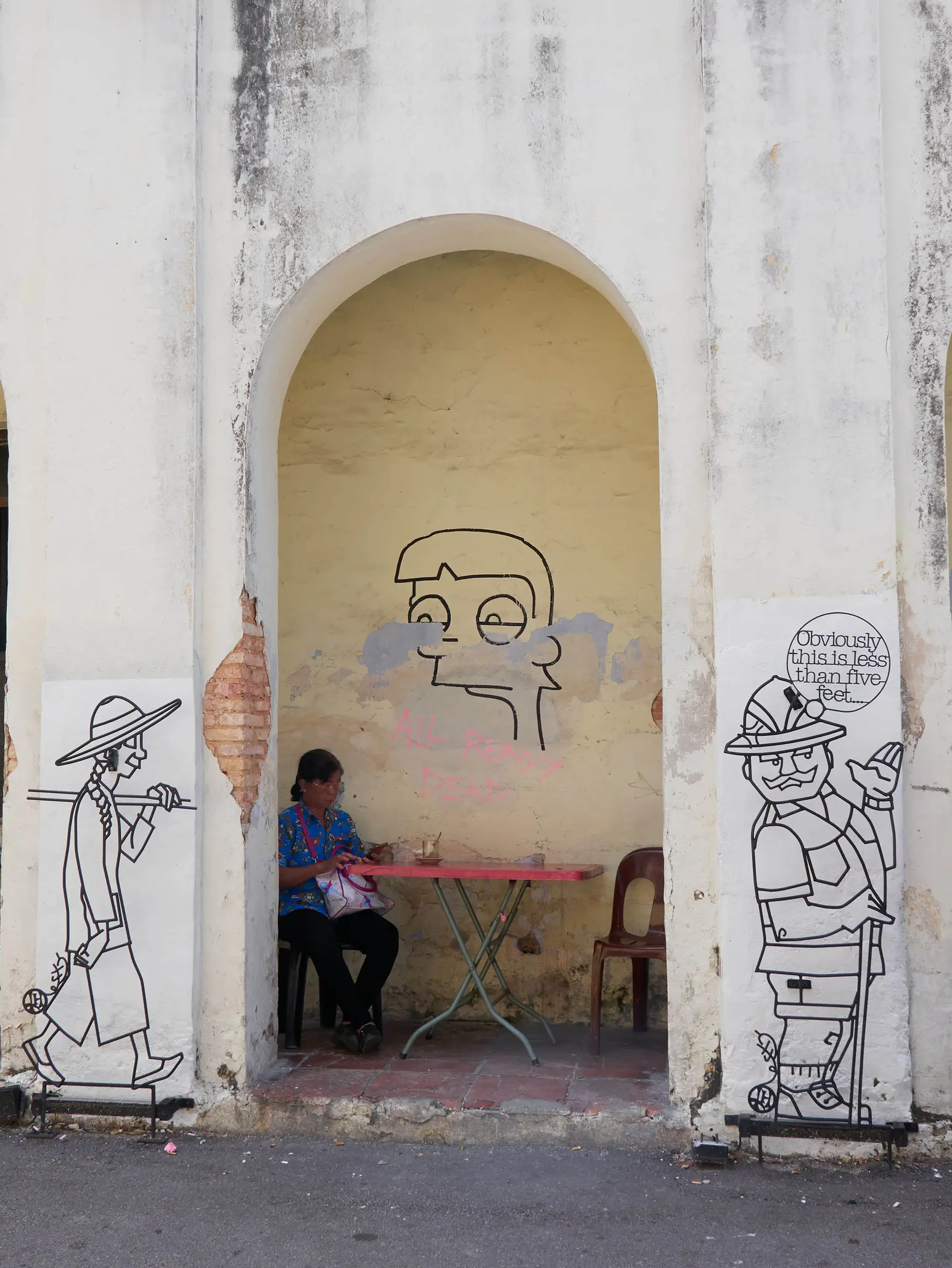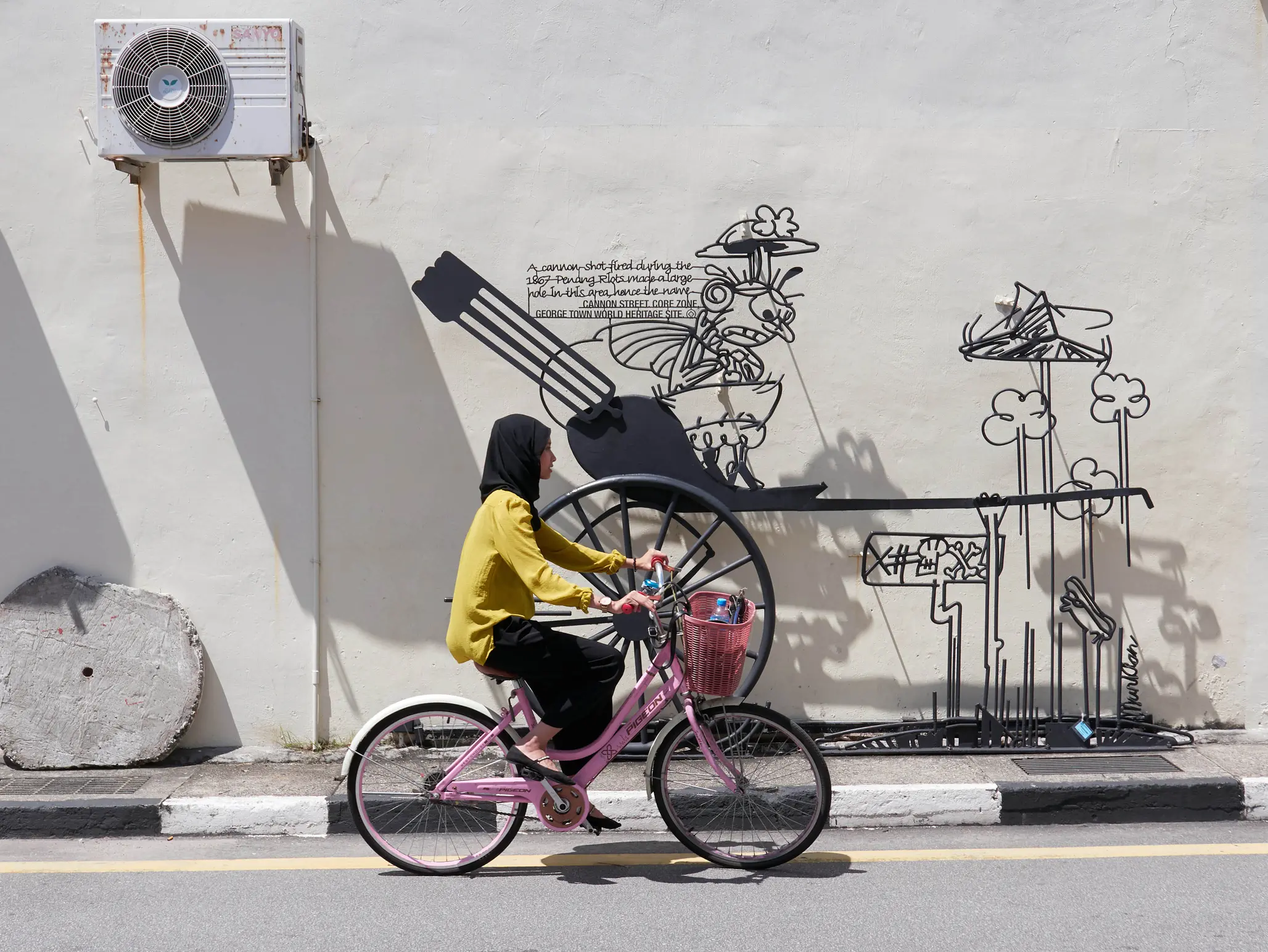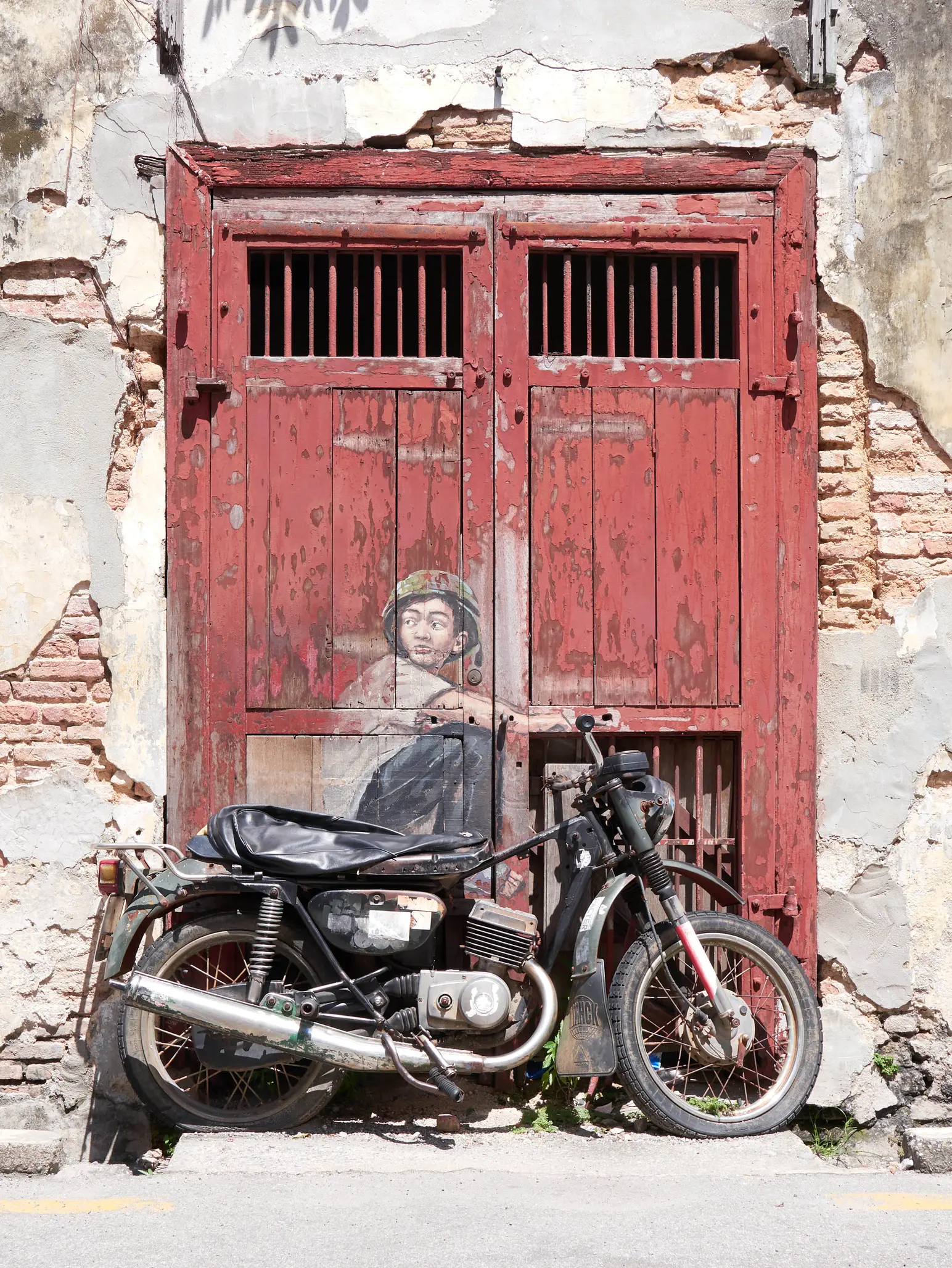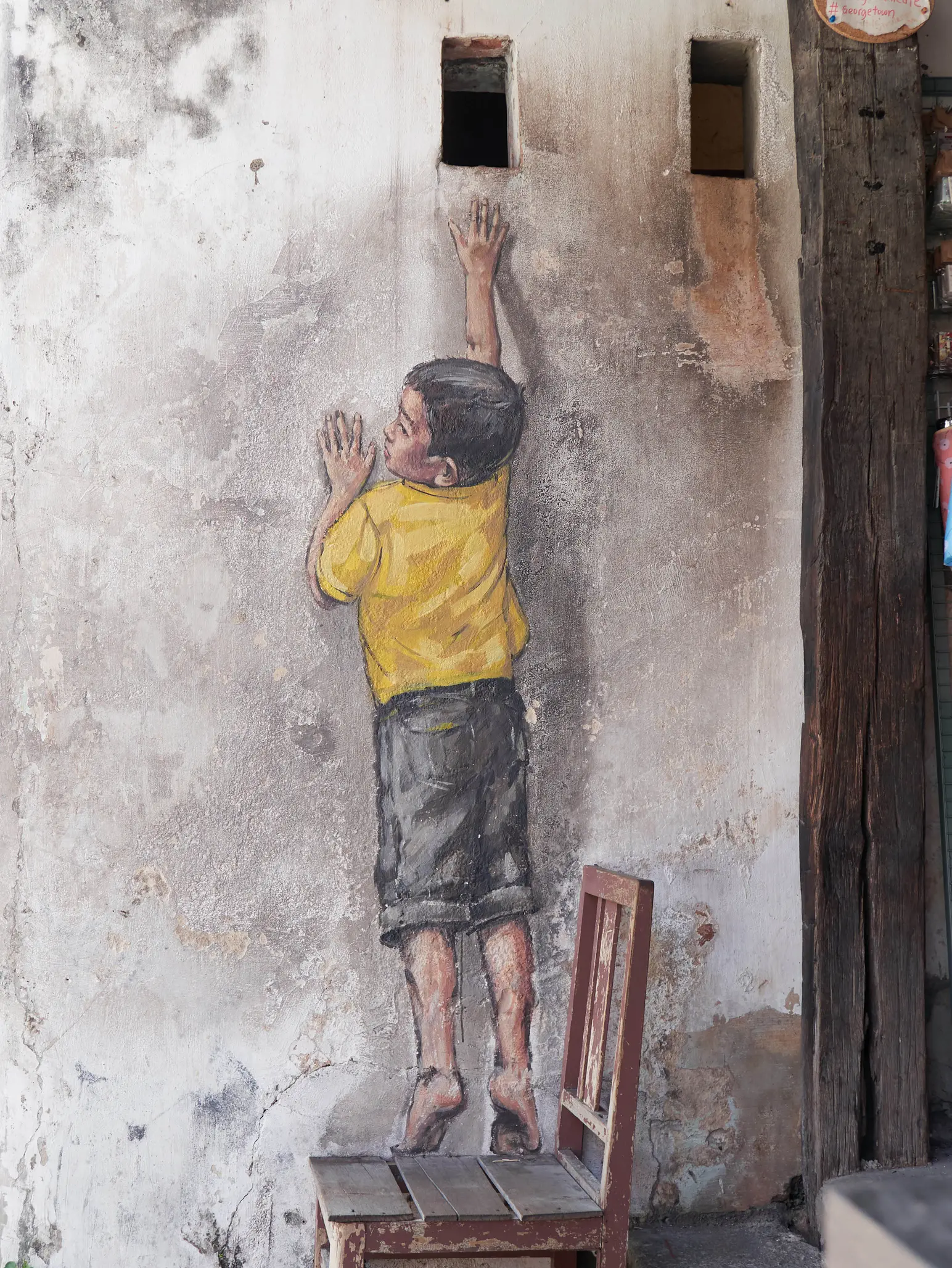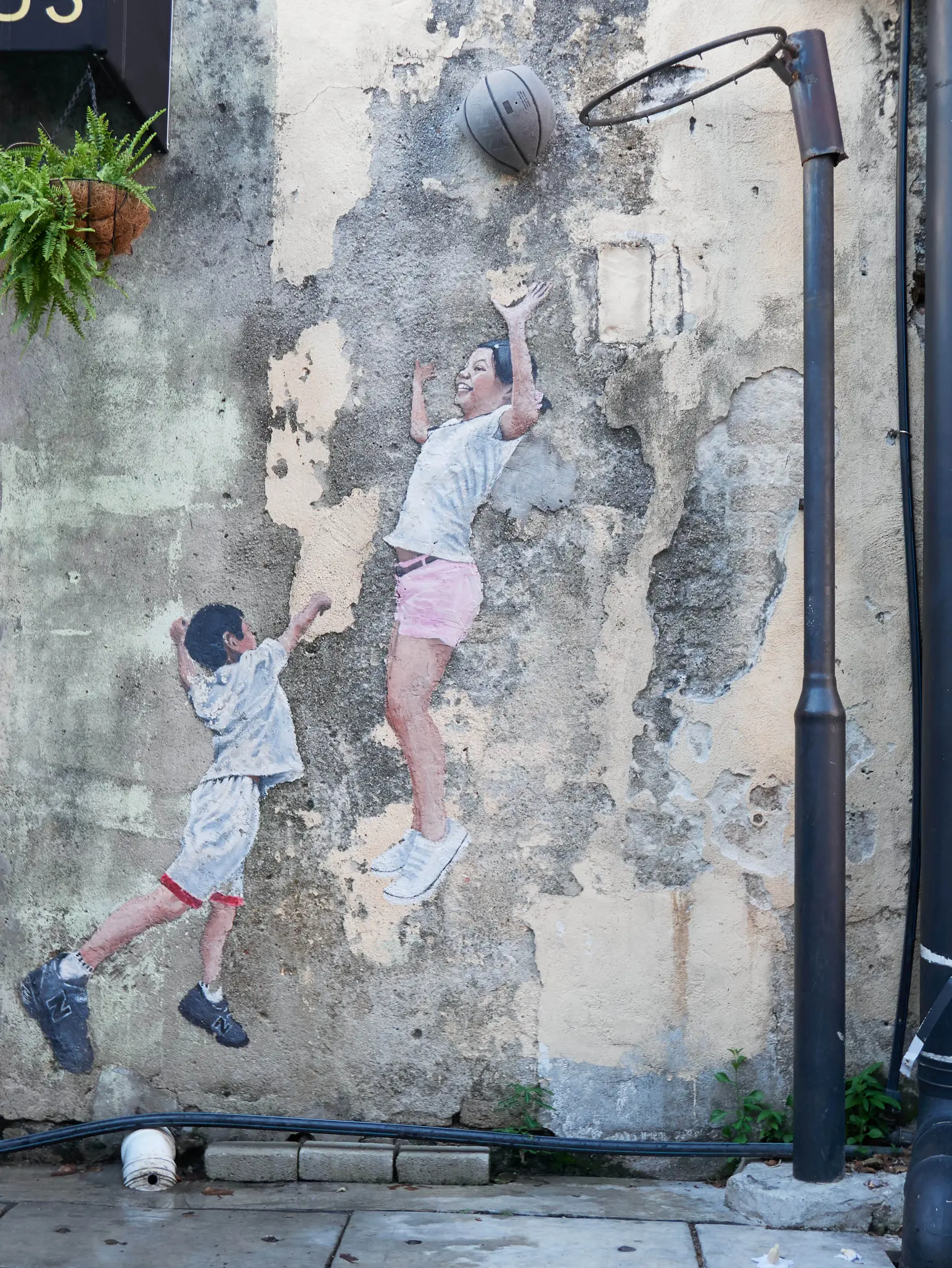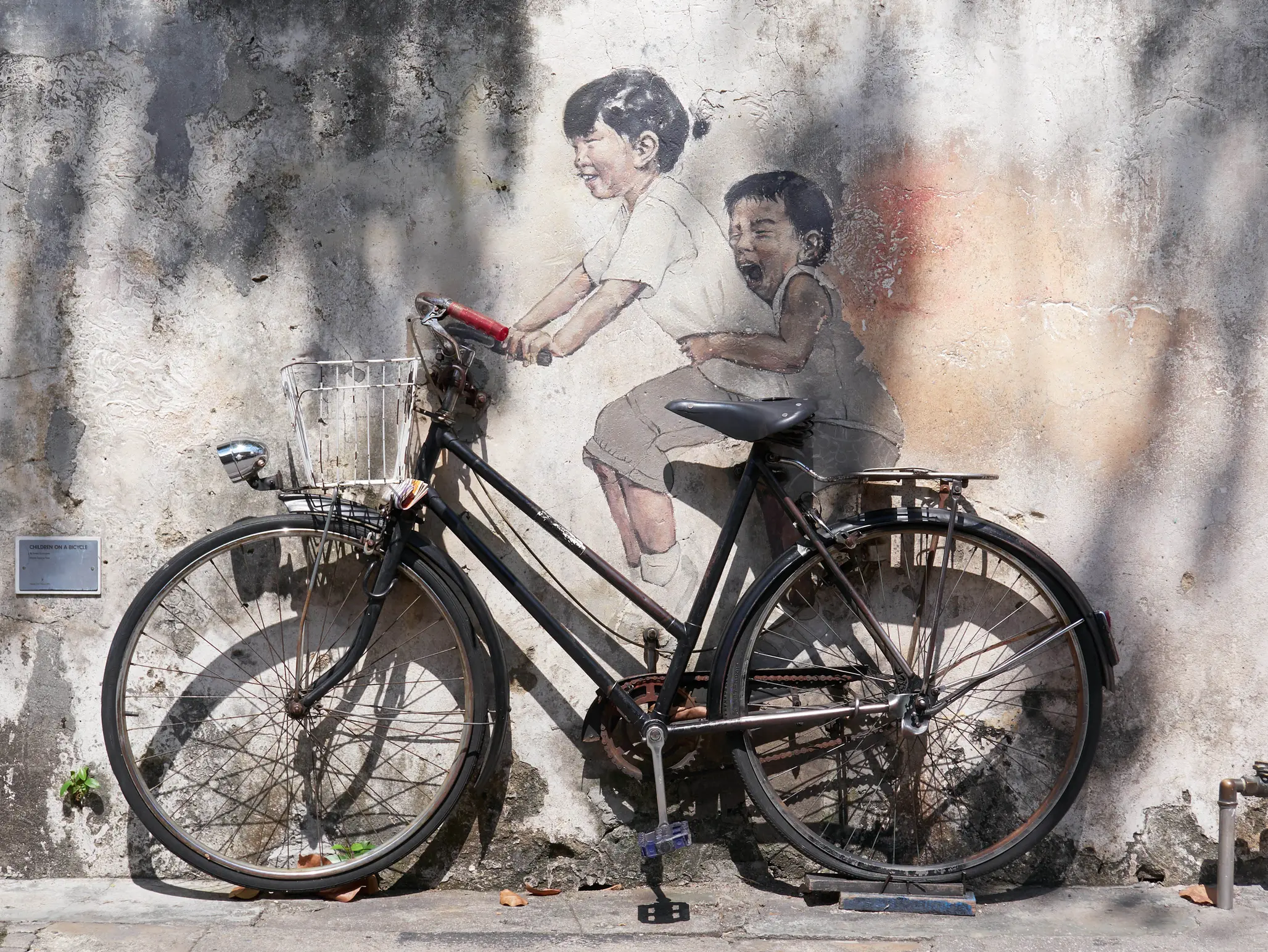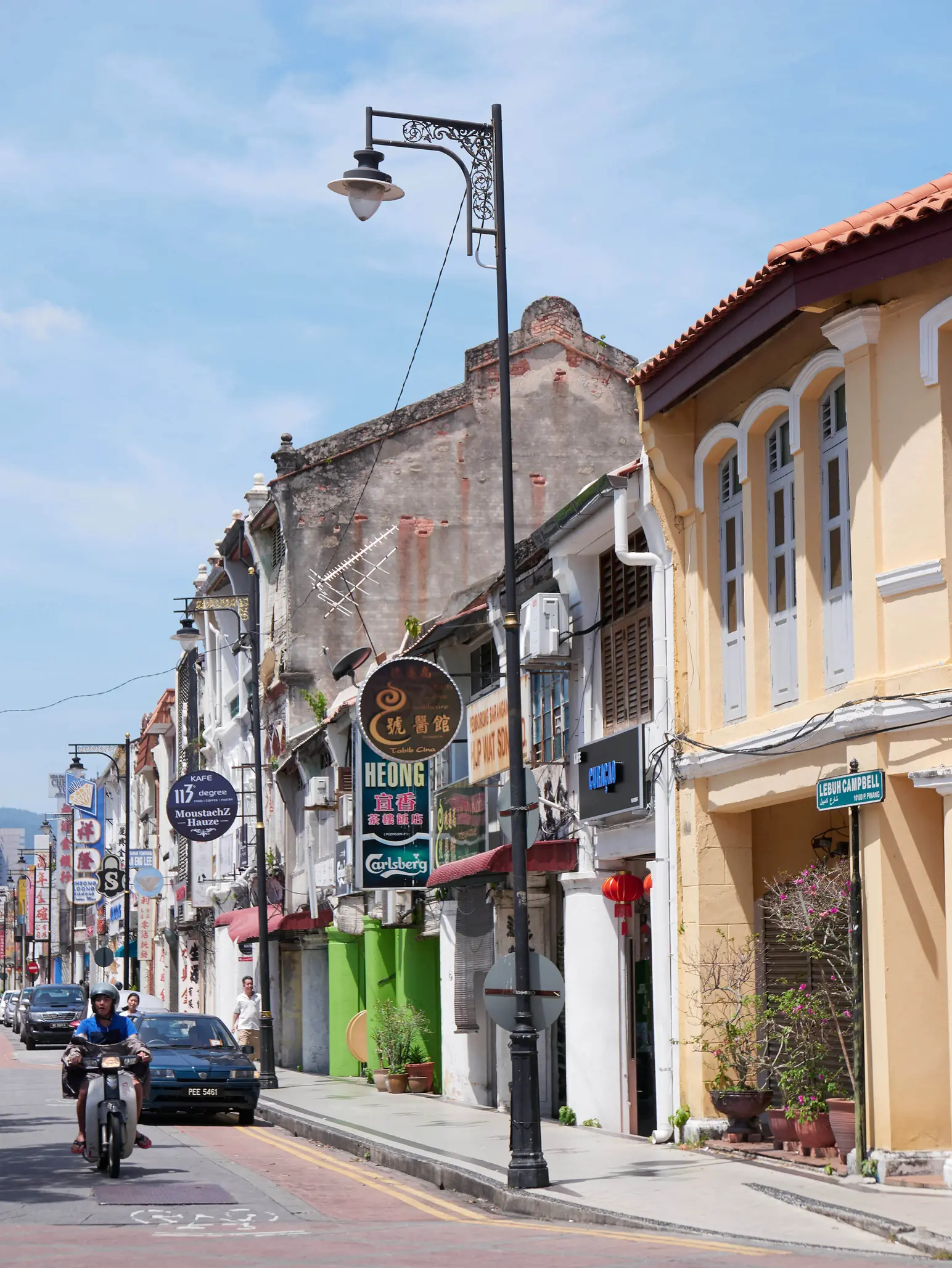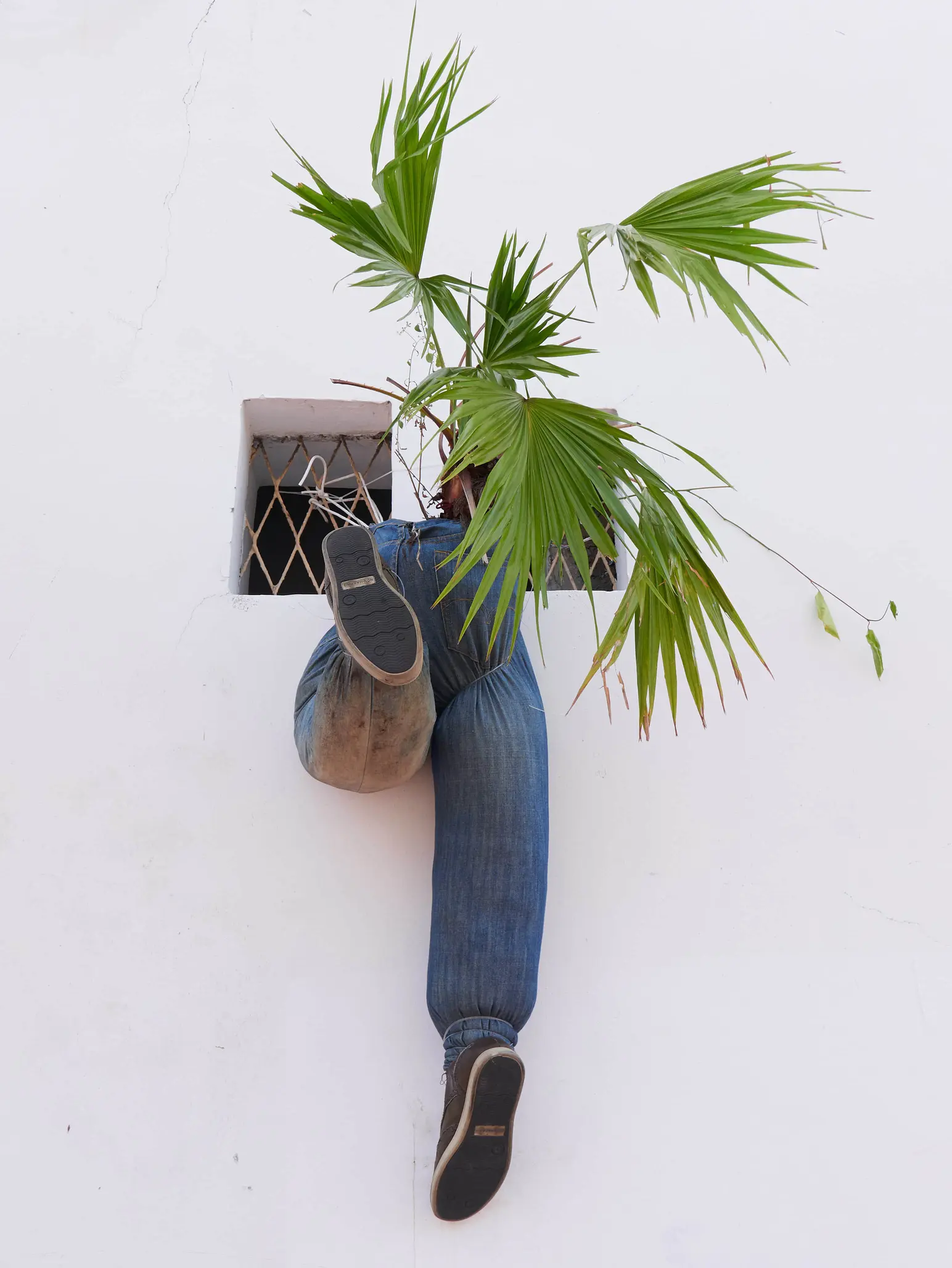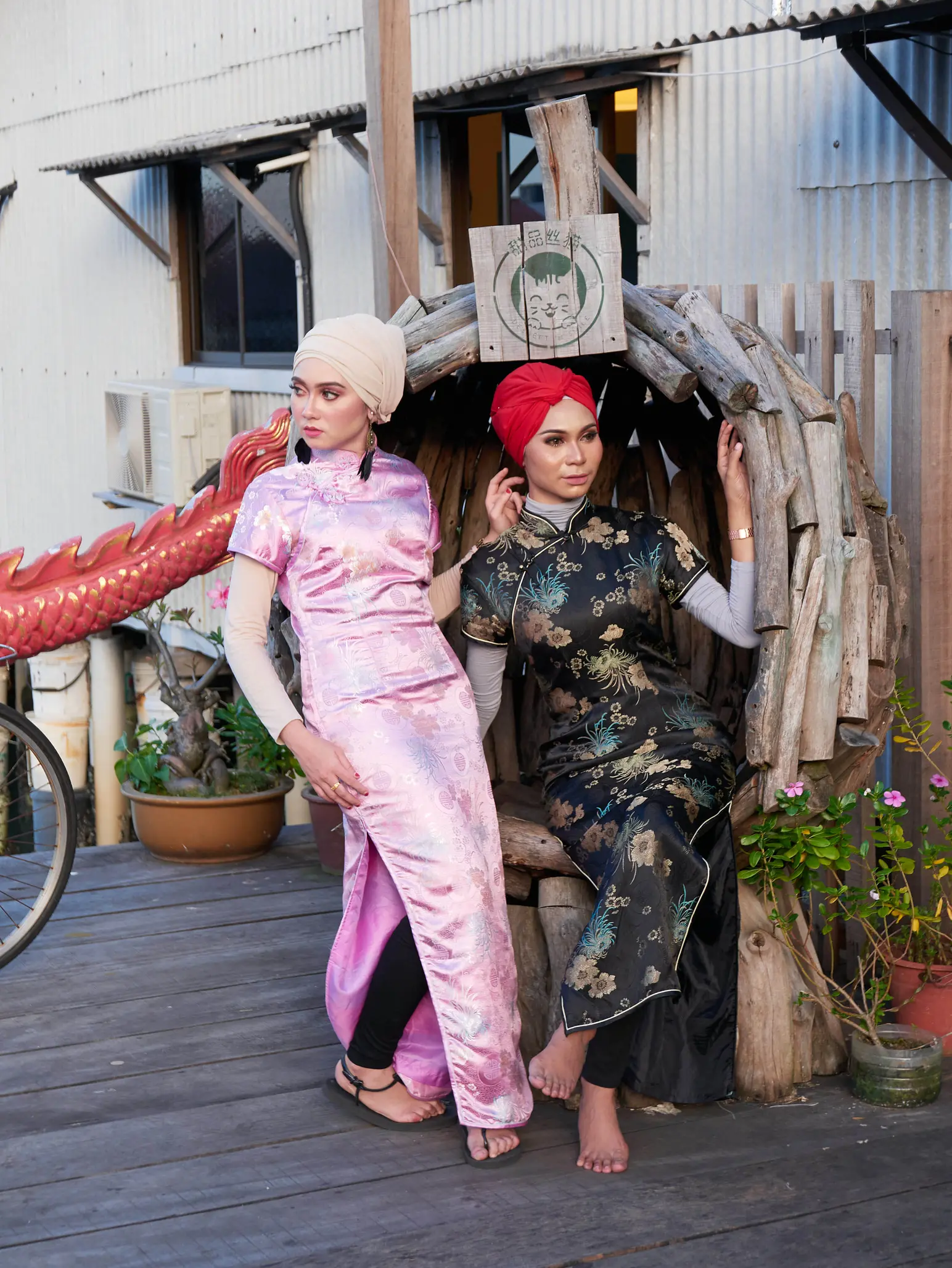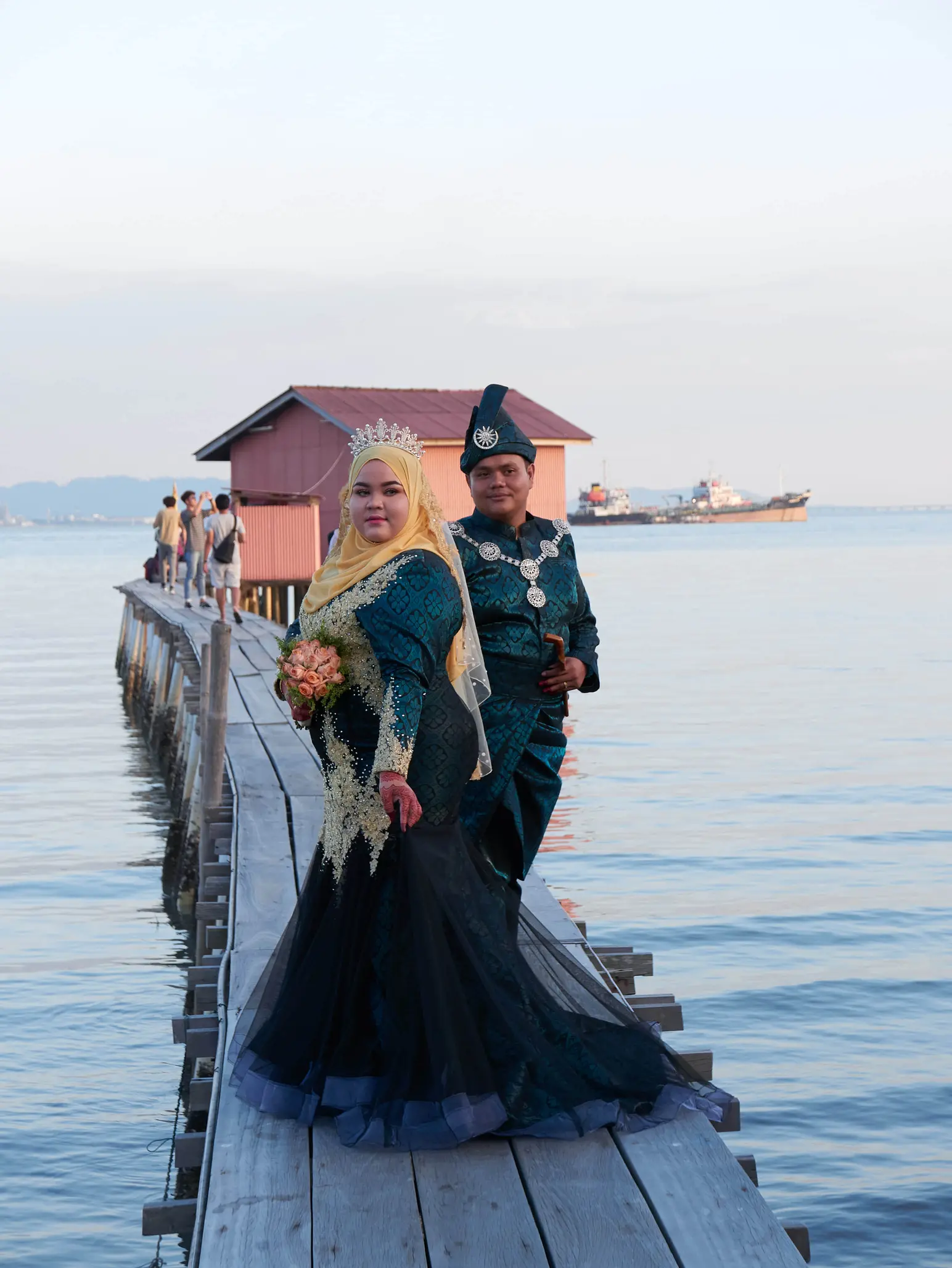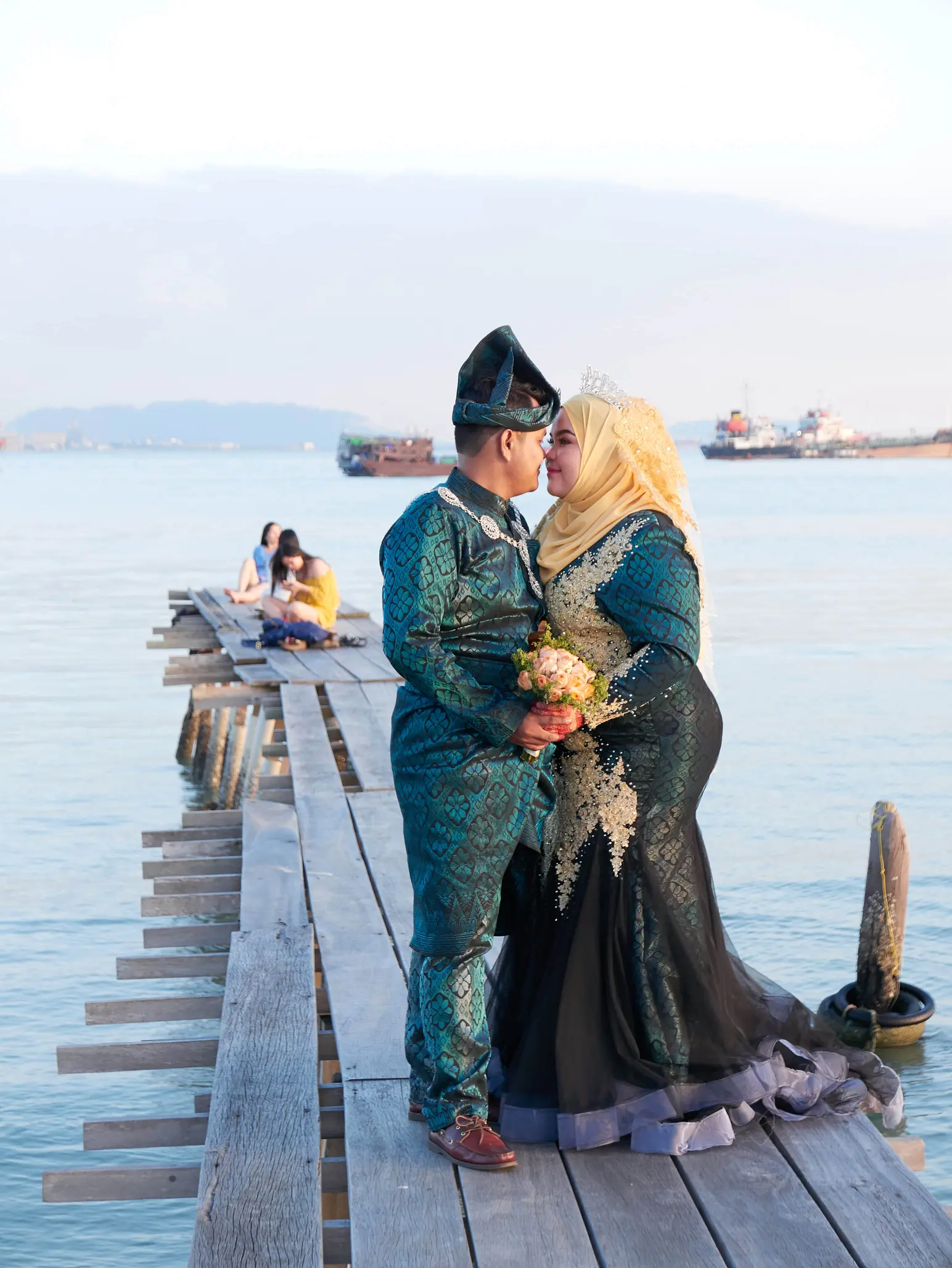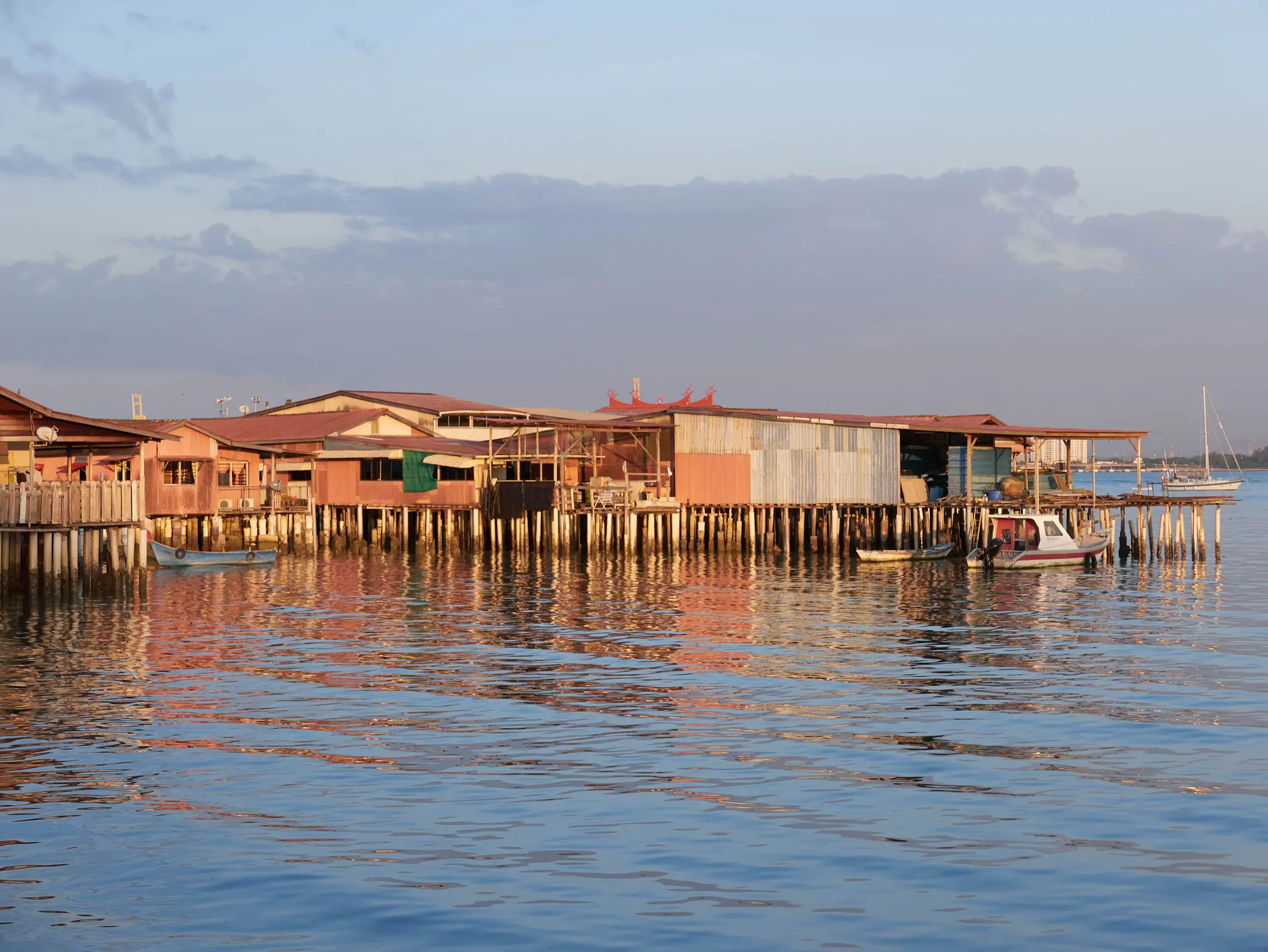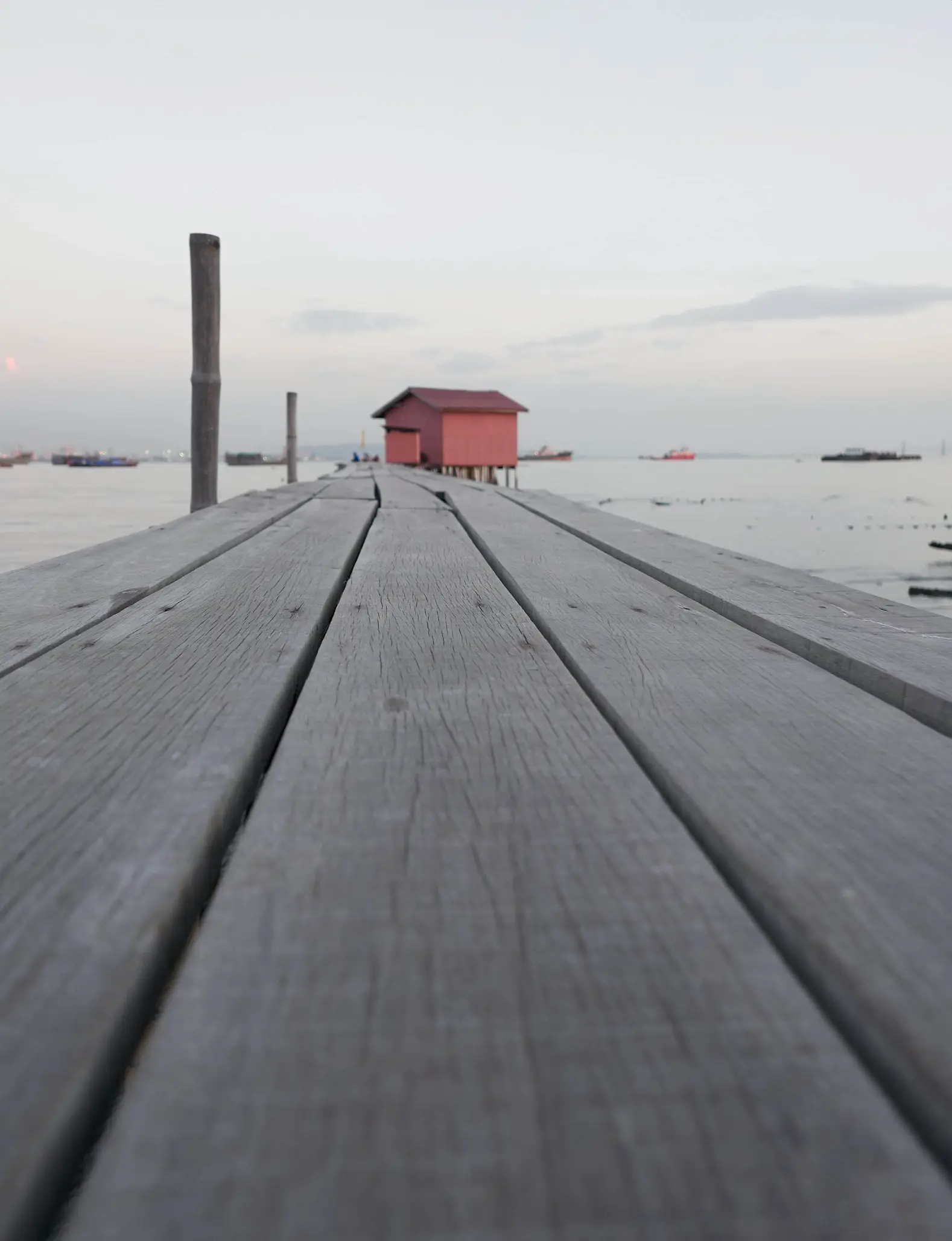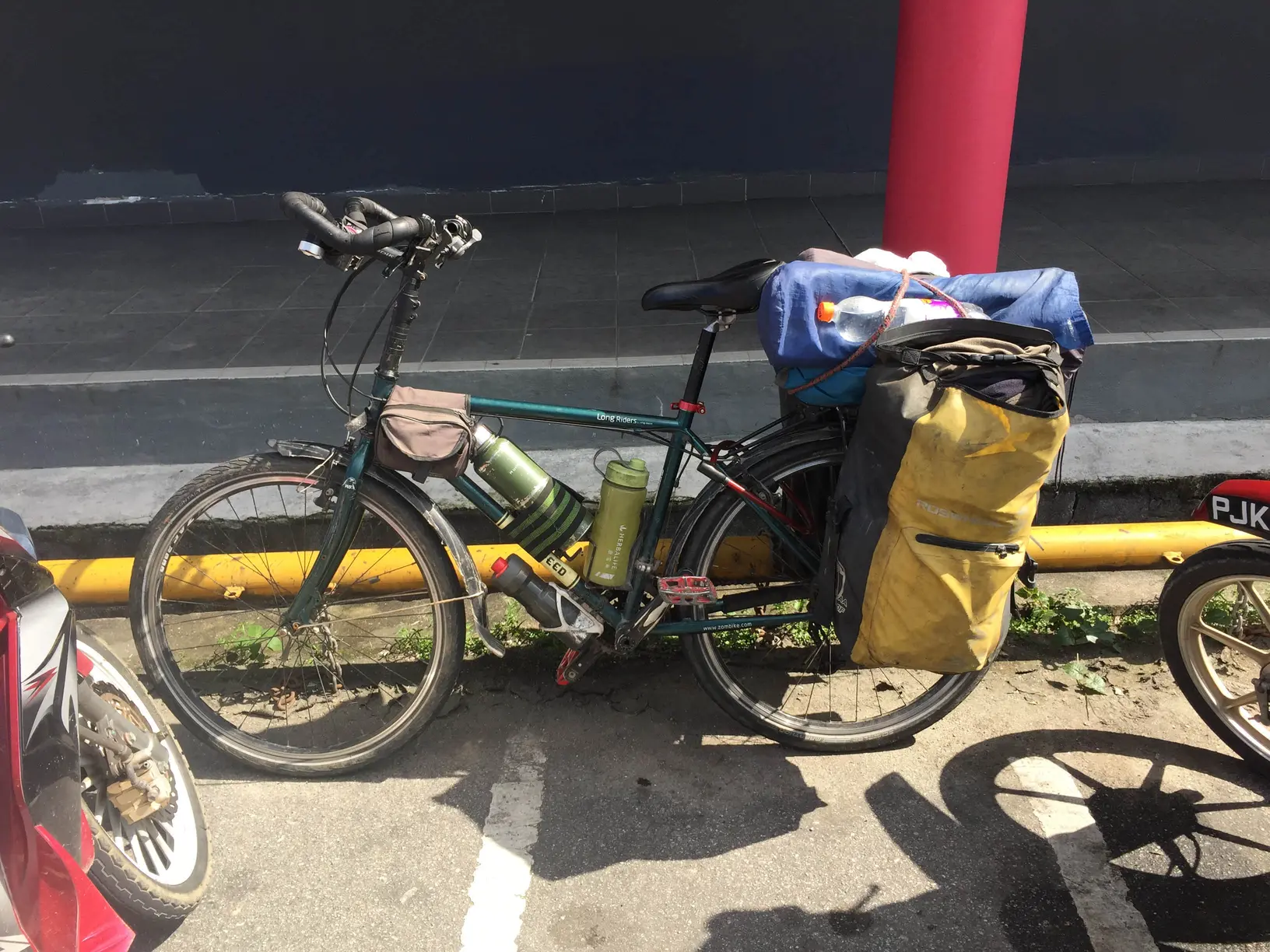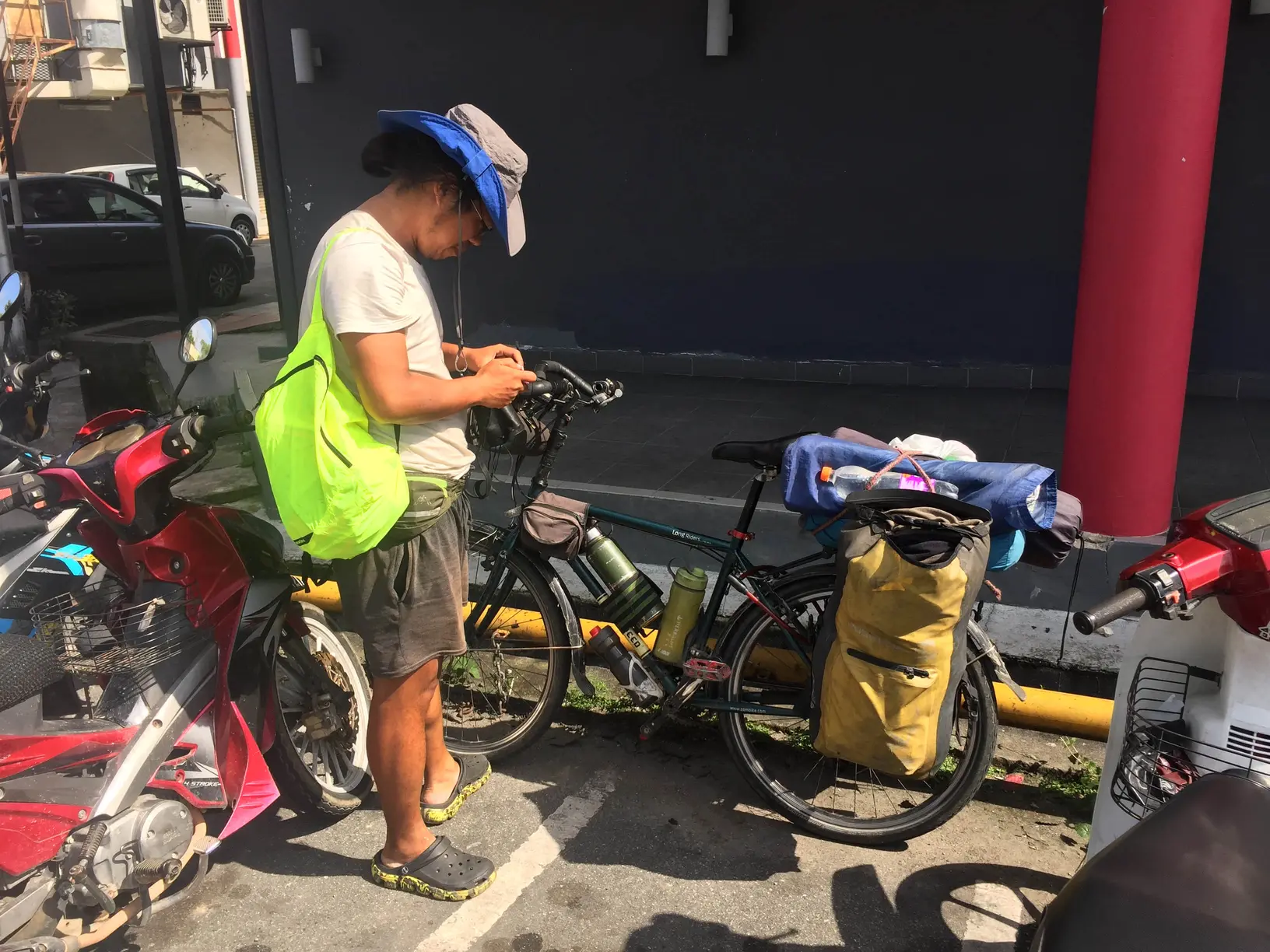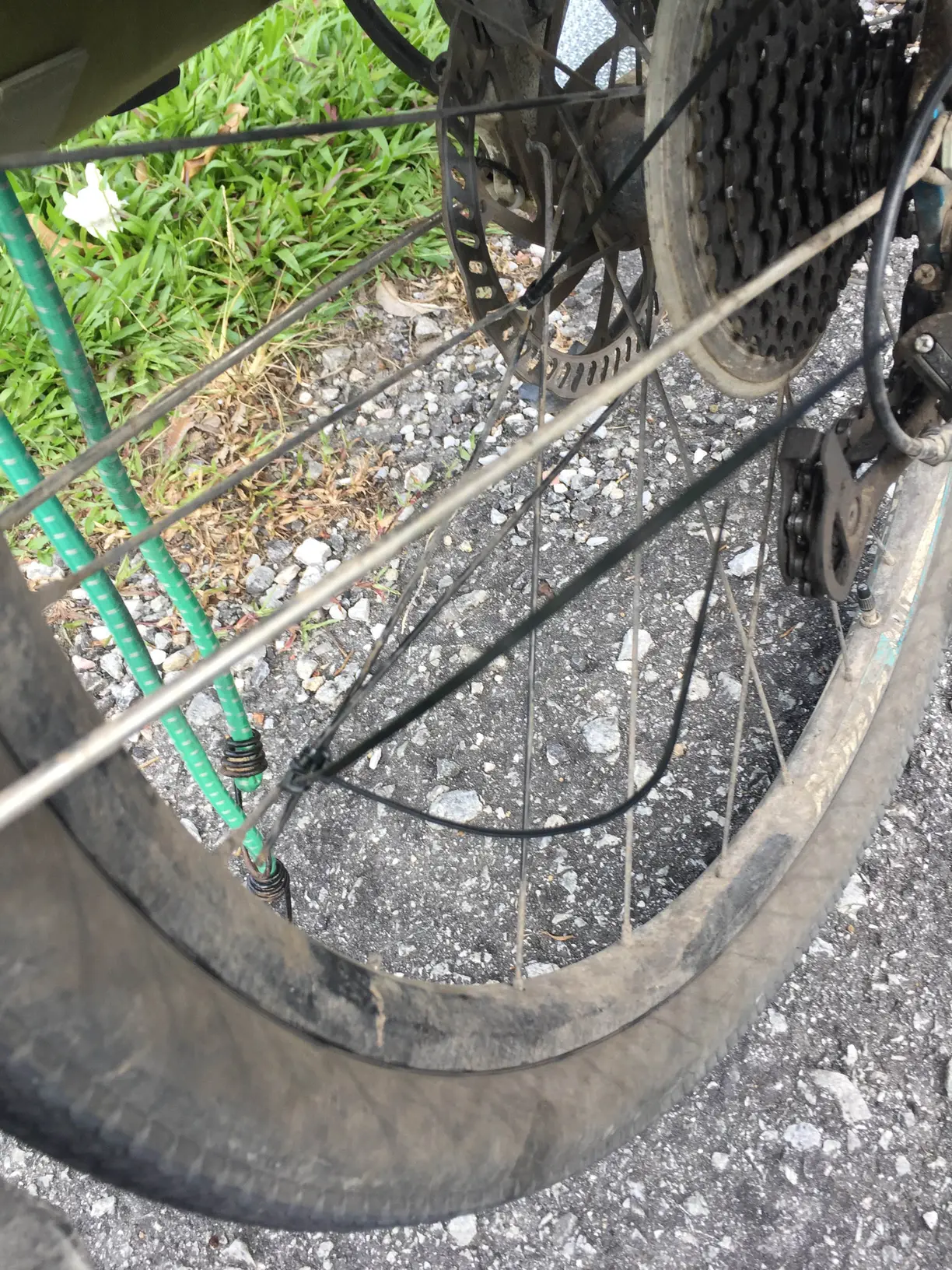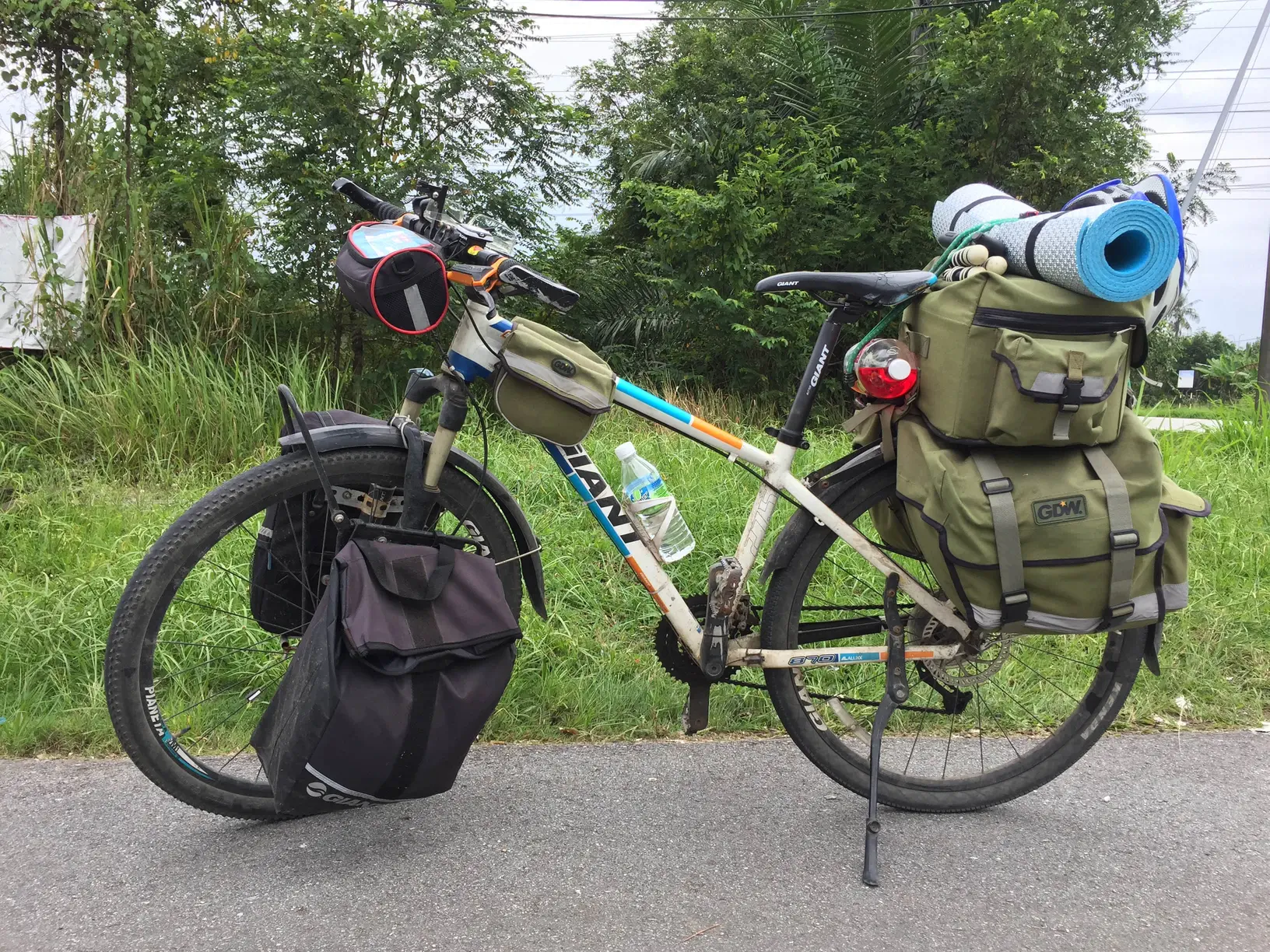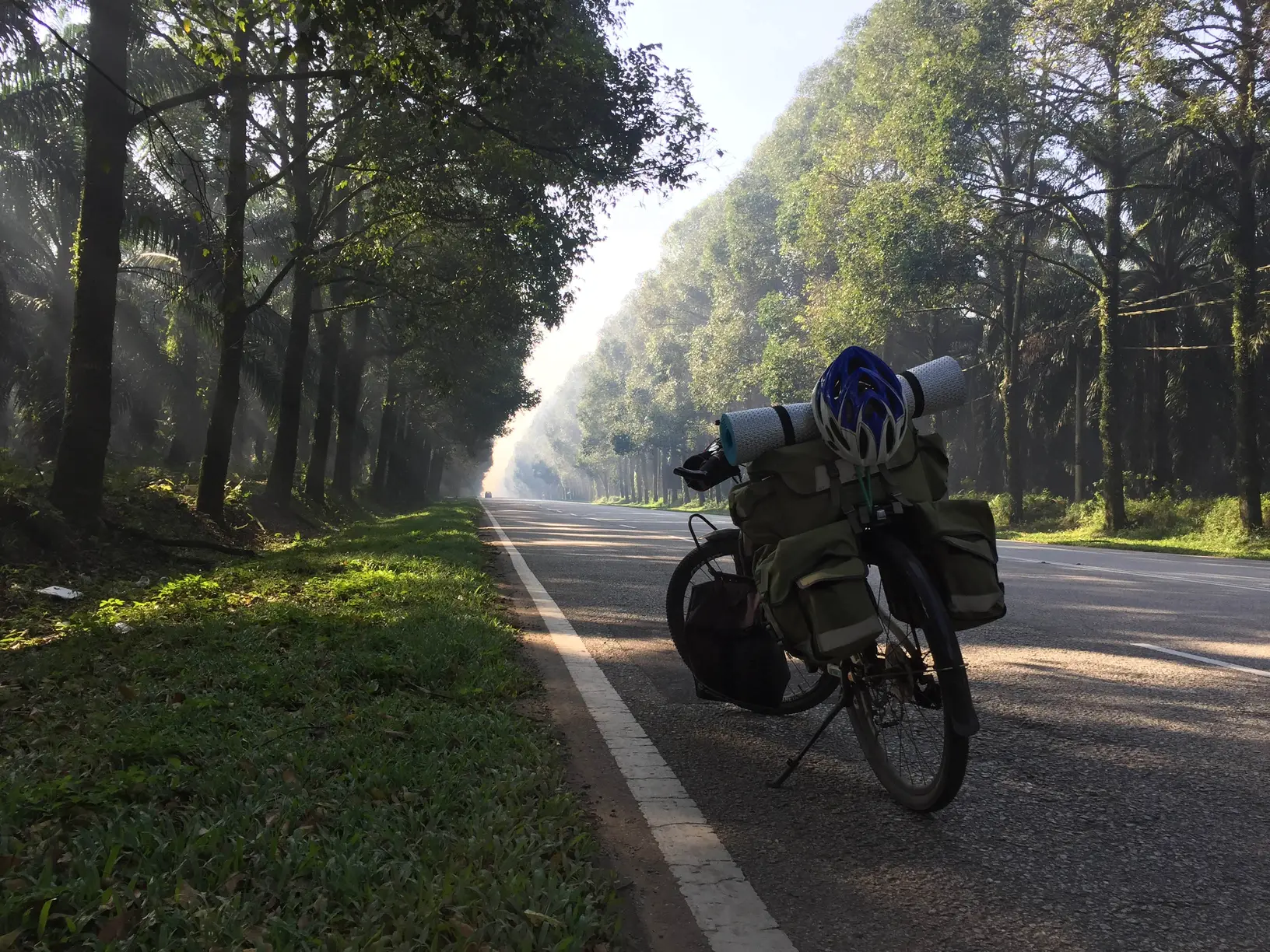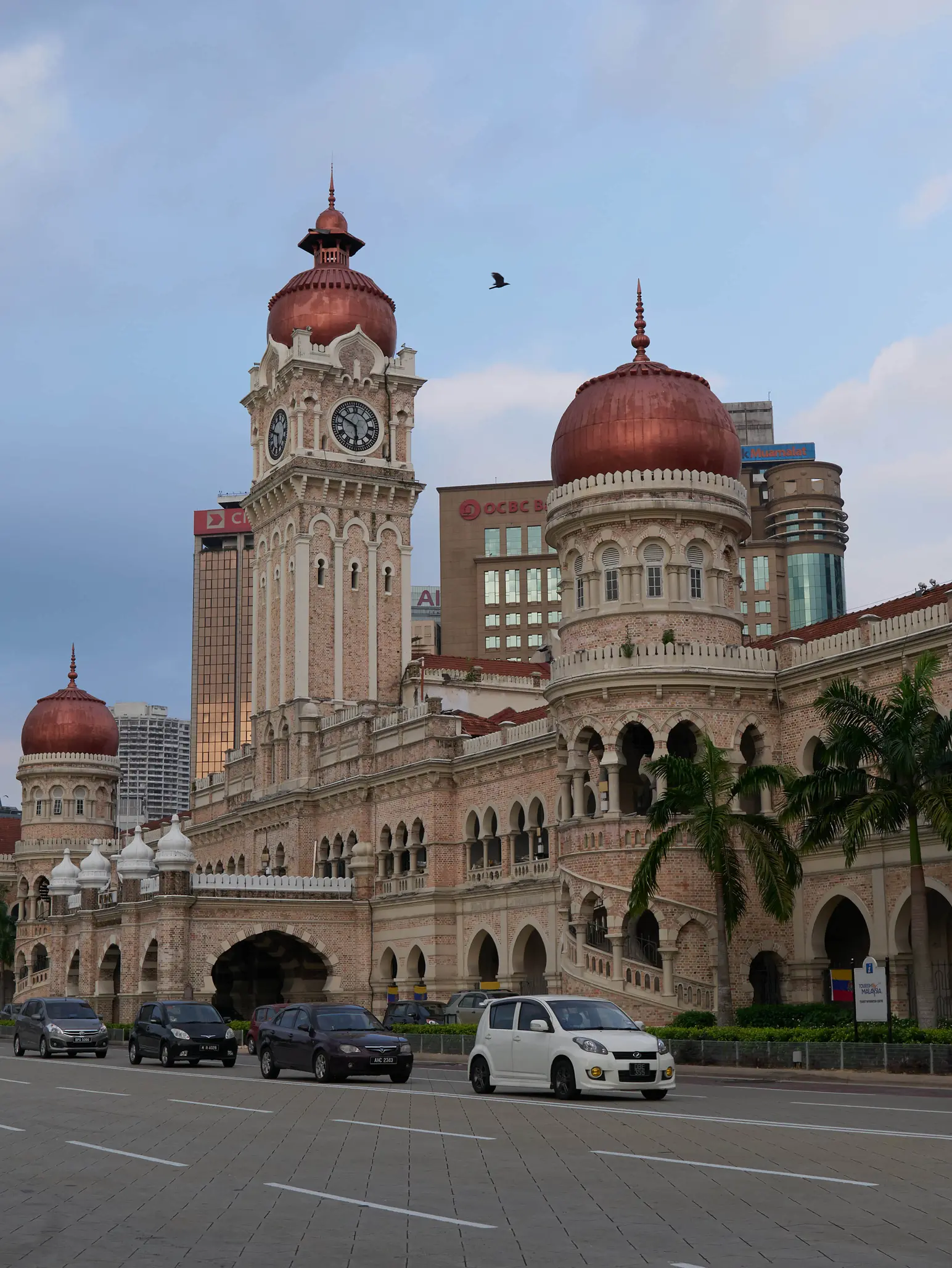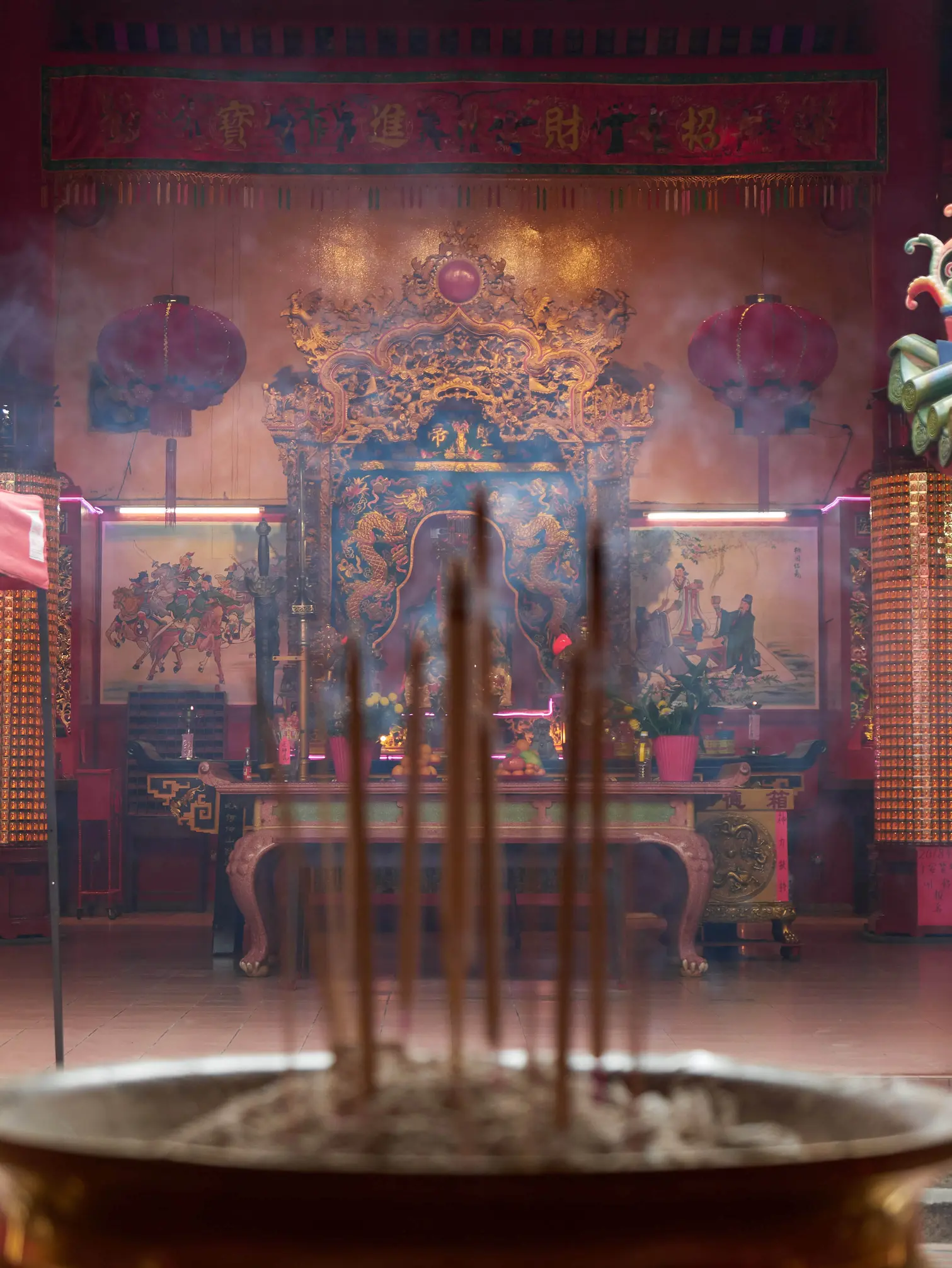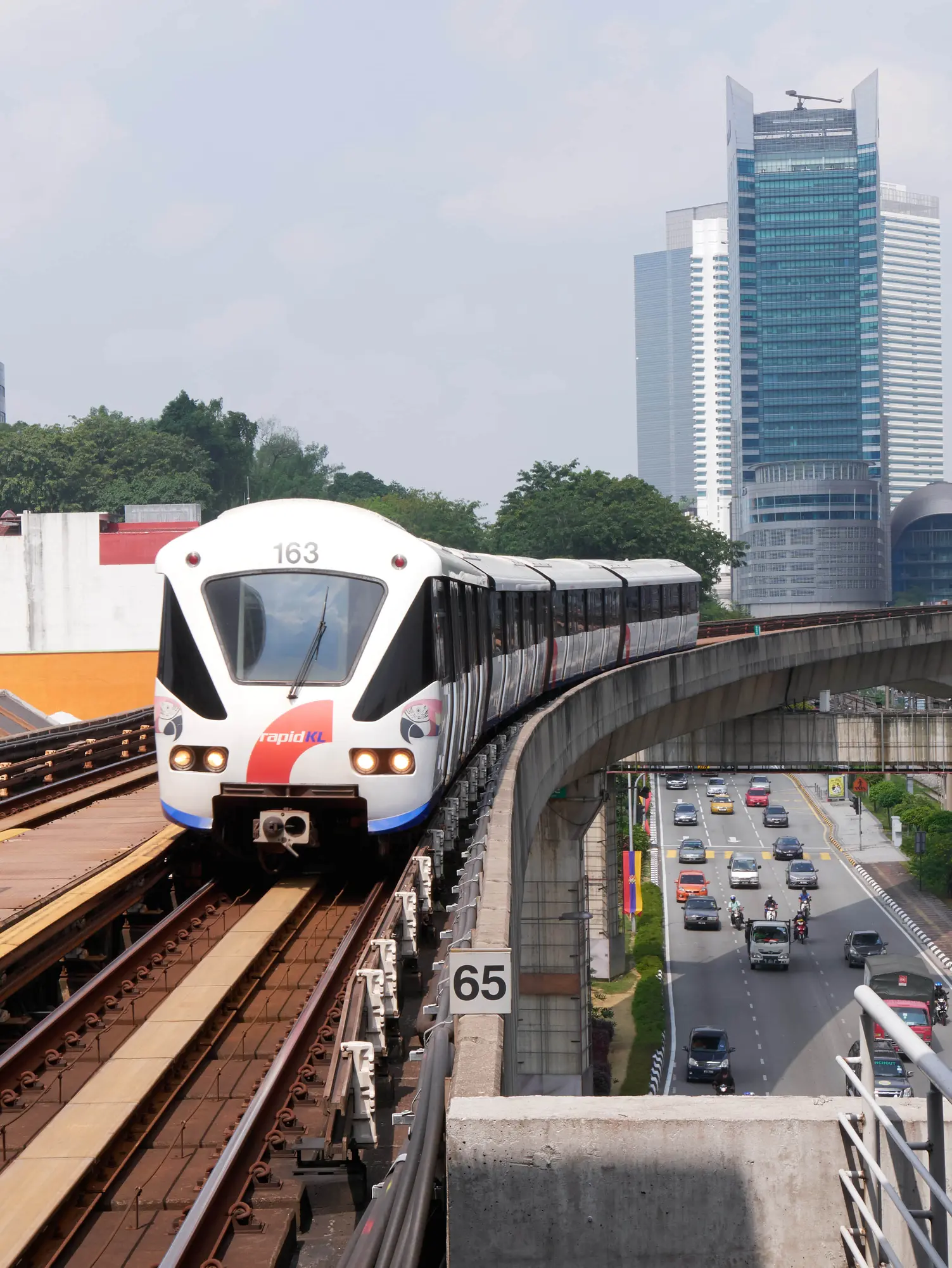1
After entering the border checkpoint, I cleared the Thai side smoothly, but encountered some trouble when entering Malaysia.
The border management under Malaysia was not as extensive as Cambodia and Thailand. As soon as I entered its territory, trucks, cars, and motorcycles had their own lanes, and followed the rules without any violation. I looked around, but did not see any sign for bicycles, so I chose to take the motorcycle lane.
Motorcycles did not need to enter the border inspection building to clear the customs. There was a booth on the motorcycle lane, and after checking the passport and visa, they could leave. But this was the operation for border residents. I followed a motorcycle slowly to the front of the booth, and the officer inside looked out and looked at the passport, and told me that I could not leave here, and had to go to the border inspection building to queue up.
I parked the bike well, walked to the border inspection building and joined the end of a queue, waiting for the verification of the passport and visa. At this time, I happened to see a uniformed staff member passing by, and I went up to ask him about the relevant matters. He pondered for a while and told me to go to another place to clear the customs. I followed his instructions and came to another booth where trucks cleared the customs. After some explanation and showing the return ticket, I successfully stamped the entry stamp on the passport and visa.
After entering Malaysia, the road was good, sparsely populated, and the weather was hot. I ran all the way on the slightly downhill road, and after riding more than ten kilometers, I rested on the shady grassland by the road and ate an apple to replenish my strength. At the border between Thailand and Malaysia, I did not see any money exchange or phone card sales. So I had no ringgit, and my phone had no signal.
I took out my phone and opened the map, but I could only see the rough picture, and it went blank when I zoomed in. I could only follow the road signs, and the road signs showed that the nearest city was Alor Setar.
After resting, I did not stay too much, and rode all the way to Alor Setar. After following the evening peak traffic into the city, it was close to dusk. I turned around in the city for a few times and didn’t see a mobile phone store, and I didn’t succeed in trying to use the Wi-Fi of the roadside shops. So I found a kind passer-by and asked her to help me find a nearby mobile phone store. Finally, I successfully bought a SIM card in a Chinese sister’s store.
That night, I found a hotel in the city, and it was dark when I checked in. Malaysian hotels charge foreign tourists a tourism tax, calculated per room per night, and the price varies according to the hotel registration. The hotel’s front desk also posted a notice, telling guests that they must prohibit smoking, durian, pets and mangosteen.
After tidying up, I went to the nearby streets to find food, and I didn’t find a satisfactory one. Later, I saw a Thai restaurant and ordered a few familiar dishes, and ate alone at the table by the street.
I remember that day was the 16th of the lunar calendar, and a bright moon hung high in the sky. The street lights were dim, and there were not many cars. More than a dozen cats were scattered among the tables and chairs. A few of them jumped on the table next door that had not been cleaned up, and feasted on the leftovers, attacking and defending each other; a few of them rolled, tore, and played on the ground and chairs; and a few of them jumped up and down at my feet, chairs and tables. I ate attentively, and suddenly a cat’s head appeared in front of me. It stood on the back of the chair, bowed forward, and stared at the shrimp in the tom yum goong.
I spit out a shrimp head, threw it on the ground, and it fiddled with it with its claws, sniffed it, and turned away.
2
When I left Alor Setar the next day, I followed the advice of the sister at the mobile phone shop and rode directly onto the highway. She told me that motorcycles in Malaysia can ride directly on the highway, and bicycles should be fine too, which would shorten the distance to Kuala Lumpur a lot.
I rode on the highway for half a day, and the weather was so hot that I couldn’t stand it. My body was always exposed to the sun, and I was dizzy from the heat steaming from the asphalt road. The highway service area was too far apart for the speed of the bicycle, and not an ideal place to rest. Later, I passed some overpasses and found that I should be able to enjoy some comfort under the overpass.
The traffic planners apparently had the same idea, and they set up rest areas for motorcycles under some overpasses, usually with signs: a signpost with a picture of a person riding a motorcycle and an umbrella in the rain. It means a place for resting and wearing raincoats when it rains.
Motorcycles do not need to pay tolls to travel on the highway, and there is a special lane for motorcycles to enter and exit the toll station. In addition to the regular motorcycles, there are also heavy machines that often appear, and the roar of the exhaust pipe can be heard from afar. One moment they were hundreds of meters away, and the next moment they had passed me and left me behind.
I rode and counted the mileage signs on the guardrail, hmm, I rode a hundred meters, hmm, I passed a kilometer, hmm, I couldn’t ride anymore. As I was riding, I suddenly heard someone shouting behind me, and a man on a motorcycle caught up with me and chatted with me. After a few greetings, he said a word of encouragement, gave me a bottle of drink, and left.
When I rested under an overpass, I took out the drink. The surface of the can was hot from the sun, so I threw it in the grass to cool down. Then, I opened the drink, drank a big sip with expectation, and the taste… it was really bad, and I poured out the rest.
After resting, I continued on the road. I rested when I saw an overpass, and bought water when I saw a service area. The drivers and passengers in the service area were also not surprised by the bicycle, probably thinking that motorcycles can go on the highway, and bicycles are fine too.
That’s what I thought at the time, until I met the police.
After leaving the service area, I rode panting, watching the numbers on the road signs get smaller and smaller, calculating the distance to the next destination. At this time, a police car behind me flashed its lights and honked its horn, slowly passing me and stopping on the emergency lane in front of me. Two policemen came over.
After a simple inquiry, they checked my passport and visa, and said that I was not allowed to ride a bicycle on the highway, and I had to get off at the nearest exit. I agreed repeatedly, got on the bike and looked for the exit.
I rode ahead, and found that the police car was slowly following behind. My speed was only twenty or thirty yards, and they did not urge or honk. After seven or eight kilometers, an exit appeared on the left front. At this time, they honked and signaled me to get off here.
I got off the highway, left the toll station, and reached a junction with the national road, where I parked and rested. The police car behind also followed down, and seeing that I had gone far, they re-entered the toll station and drove back to the highway.
When I rested, I looked at the map and replanned the route. The national road was more tortuous and difficult than the highway, and the distance increased by tens of kilometers. It was close to noon, and I found a place by the road to solve lunch. It was a small stall run by a Malay, under a highway overpass, with seven or eight tables, selling food and coffee.
The nearby diners saw me as a stranger, and came over to chat with me one after another, saying nothing more than where I was from, where I was going by bicycle, and whether it was hot on such a hot day. One of the big brothers tried hard to sell me the boss’s coffee, saying how delicious it was, and without waiting for me to answer, he brought me a cup. After the meal, I paid the boss, and he said that the coffee brother had already paid for me.
After the meal, I rested in the shade for a while before continuing on the road. Because the distance increased a lot, I didn’t rest much in the afternoon, and rode all the way to George Town.
When I was close to George Town, the sky changed, and I hid under an elevated bridge with many motorcycle riders from a storm.
George Town is the capital of Penang, and it is on a small island, similar to Xiamen in terms of geographical location, surrounded by the sea, and connected to the land by a cross-sea bridge. Bicycles cannot ride on the cross-sea, and have to take a ferry to enter the island. After the storm, night had fallen, and I hurried to find the location of the pier. The pier area was under construction, and the roads marked on the map were not clear, and the people and car flows had different terminals. After asking many passers-by, I finally found the right direction. I bought a ticket at a small booth, followed the sign to the ferry waiting area, and waited with mostly local motorcycle riders.
A few minutes later, the ferry docked, and the iron railing slowly retracted, and everyone entered in a line.
When I got to the island, I followed the map and found the hostel, put the bike away, took a shower, and went out to find food.
3
George Town has a large Chinese population, most of whom are descendants of Fujian, Guangdong and Hainan people who came to Nanyang in the early years, so their customs and habits are also similar to those provinces.
I ran to a night market stall, where most of the stall owners were Chinese, shouting in Mandarin, Hokkien (Minnan), Cantonese and other languages. I found a small street shop and ordered a bowl of Hokkien noodles.
In the old days, most of the Fujian people who came to Nanyang were Minnan people, so outsiders gradually called them Fujian people, their Minnan dialect was called Hokkien, and their food was also crowned with the word “Hokkien”.
George Town is by the sea, so all kinds of seafood are also essential in the local people’s diet. In a few minutes, a bowl of Hokkien noodles was ready. The shrimp shell broth made the noodles more rich in flavor, and the dried shrimp and scallion oil brought back some of the feeling of Xiamen. Meatballs, slices of meat and bean sprouts were spread on top, and chili was placed on the table for the diners to take.
The next day, I started walking from the streets near my residence, and first came to the Tianhou Temple. The hollow dragon pillars outside the door were in line with the Minnan temples, and the incense inside was constant, and the believers came and went endlessly.
The sculptures, installations and murals on the streets of George Town are already well-known, and the most famous one is the work of Lithuanian artist Zacharevic, who was commissioned by the George Town government and left a series of works that combined with the architectural features on the streets.
Some people made a map collection of the works on Google Maps, and I followed the map to see them one by one. The murals mostly show the interesting life scenes of Penang, one of them shows a brother and sister riding a real bicycle and running wildly; then it turns to a little boy standing on a chair and trying to climb up; another one shows a brother and sister standing on a swing and smiling happily; the next one is a basketball showdown, a real basketball flying in the air on the mural, and it seems to be going into the basket; and so on, too many to count.
After seeing the murals, I walked to the Zhou Bridge, where there was a temple dedicated to the God of Medicine at the entrance, and there were a few grandpas and grandmas in charge of speaking Minnan dialect and chatting. This place used to be a prosperous port, providing a lot of job opportunities for people, so people gradually gathered and settled, and the surrounding area also prospered. People lived along the coast, built various water houses and stilt houses, and connected each other with elevated wooden walkways.
Nowadays, the role of the port has been weakening, and the sightseeing function of the attraction has been strengthening, and various tourist facilities have been constantly improved, attracting more and more tourists.
Walking on the narrow walkway, you can see many late-returning fishing boats, adults are moving the catch, and children are laughing and playing. The sound of TV from the local people’s homes passed through the thin wooden houses to the distance, and the cooking smoke rose from the sky. The sun was setting, and the sea was shining with waves, and the stilt houses were reflected with strands of golden.
Two models were shooting, and I went up and took a few pictures; a Malay couple was shooting wedding photos, and I went up and took a few pictures, and then sent blessings. After taking the pictures, I showed them to the couple, and the husband praised me for taking good pictures.
The day I left George Town, I still took the ferry to the opposite shore, and then followed the national road to Kuala Lumpur. Halfway through, I met a fellow rider who came from Sri Lanka. We chatted for a while at a McDonald’s by the road, and then went our separate ways.
4
As I rode on the road, I felt more and more exhausted. At first I thought it was just my condition, but later I found out that it was the tire’s problem. I stopped and checked, and two spokes of the rear wheel were broken. I had been riding this bike for so long, and this was the first time I encountered a broken spoke. I didn’t have the tools to fix it, and even if I did, I probably wouldn’t know how to.
I hadn’t seen any bike shops on the way before, so I came up with a compromise solution, using plastic straps to fix it. It wasn’t perfect, but it was barely rideable. I thought as long as it could hold on for two more days, I would reach the end point.
After fixing it, I rode at my usual speed, and didn’t feel much difference. I didn’t ride much that day, only eighty or ninety kilometers. I calculated that I still had more than a hundred kilometers to Kuala Lumpur, so I found a place to stay early. I prepared to rest and recharge, and get ready to reach the end point of this trip with full energy the next day.
The morning I left for Kuala Lumpur, I checked out and pushed the bike out of the parking lot, only to find that the bike had a flat tire. The tire was deflated, leaving only a little bit of air. I thought it must have burst the day before, but the wound was not big, so the air would slowly leave, so it still had some left after a night.
I pushed the bike out of the hotel, neither changing nor repairing the tire. After having breakfast nearby, I used the pump to fill the tire, and continued to ride after getting on.
After thirty or forty kilometers, the tire started to deflate again, and I continued the morning’s action, stopping and filling it up. The broken spokes seemed to have shifted again, so I added another strap to fix it. When I reached a village, I saw a huge dumpster by the road. During the ride, I kept thinking that since I wouldn’t ride anymore when I got to Kuala Lumpur, I could throw away some of the luggage and lighten the load. But before I reached the end point, anything could happen, and the things I brought might be useful. Now at this point, on this road not far from Kuala Lumpur, I should be able to throw away some.
As I was thinking wildly, my steps did not stop, and I passed that intersection in a flash. As I was thinking wildly again, I decided to turn around and go back to the dumpster. I untied the backpack and temporarily checked the luggage. A brand new tent pad, which hadn’t even been opened, threw it away; a raincoat that was crumpled into a ball, threw it away; a helmet, which I had hardly worn, threw it away; a water bottle, didn’t want it, threw it away; a tent, a sleeping bag, a moisture-proof pad, which I thought I wouldn’t need anymore, threw them all away.
After unloading the burden, both the person and the bike became much lighter, so I ran all the way, riding out the fastest average speed since Vietnam. I rode through the bustling crowd, and also through the desolate grass, waited for many traffic lights, and gave way to two cars. The sweat kept dripping, on one long slope after another, looking at the water in the bottle that was almost gone, I found that my thirst was greater than a sea.
On this non-stop road, the tire gradually couldn’t keep up with my speed, and felt that it was leaking air.
Under the attention of many drivers passing by, I continued the plan of filling up the air. After turning over the last long slope, the Kuala Lumpur city area appeared in front of me. Following the map’s instructions, I shuttled between the people and car flows, and after turning around, detouring, circling, asking for directions, and changing routes, I finally found the booked hostel.
5
Kuala Lumpur has a short history. In the early years, Chinese miners came to this place to explore for minerals, and named the area where the two rivers meet “Kuala Lumpur”. With the continuous discovery of minerals, more people were attracted to come, and Kuala Lumpur quickly developed into a lively, noisy and wealthy town.
I still wandered aimlessly in Kuala Lumpur, first I went to the old railway station, and looked at its circular dome and horseshoe-shaped arches, and the white plaster exterior wall that was full of colonial features.
Not far from the old railway station is the National Mosque, which is a huge mosque. Next to it is a minaret that is tens of meters high, and the sound that comes out can be heard for kilometers. Non-Muslims can also visit for free outside of prayer time, and there are robes prepared for tourists at the entrance.
There is a hill next to the National Mosque, and at the foot of the hill is an Islamic Art Museum. The museum has models and introductions of famous mosques from all over the world, as well as exquisite carpets and jewelry exhibitions, etc., which can broaden one’s horizons.
On the top of the hill is a planetarium, which has nothing new, and is a family-friendly attraction. Then I walked around the streets and malls that I couldn’t name, and was preached by young students about “the greatness of the Lord”. Finally, I came to Chinatown and ate some familiar food.
As the return date approached, I didn’t want to take the bike back, so I found a bike shop and asked the boss if he would take it. The boss said that there are many bicycles in Kuala Lumpur, and no one would buy it. So I gave the bike to the hostel guests, and only kept a small part of the luggage.
After arriving at Klia2, I wandered around everywhere, and then went through customs, boarded the plane, and flew to China.
An uncle next to me asked me if I was Malaysian. I shook my head and thought, did I get so tanned?
The original text of this article is in Chinese, translated by Copilot(GPT-4).
(END)

